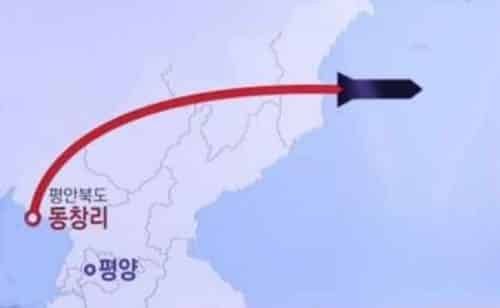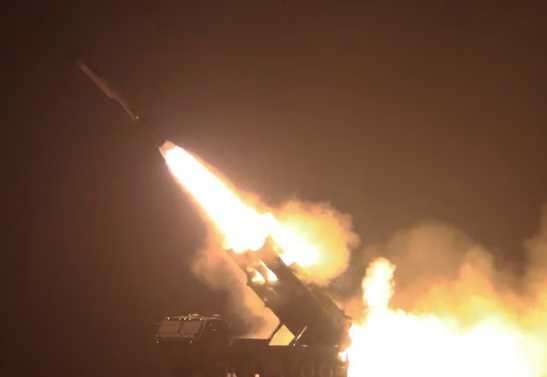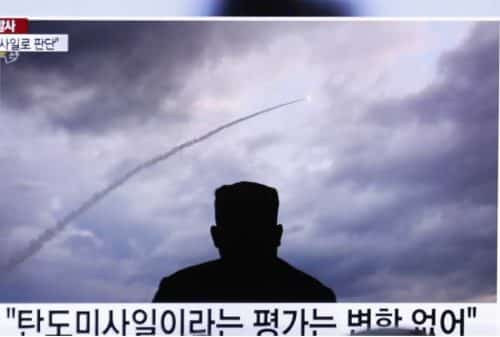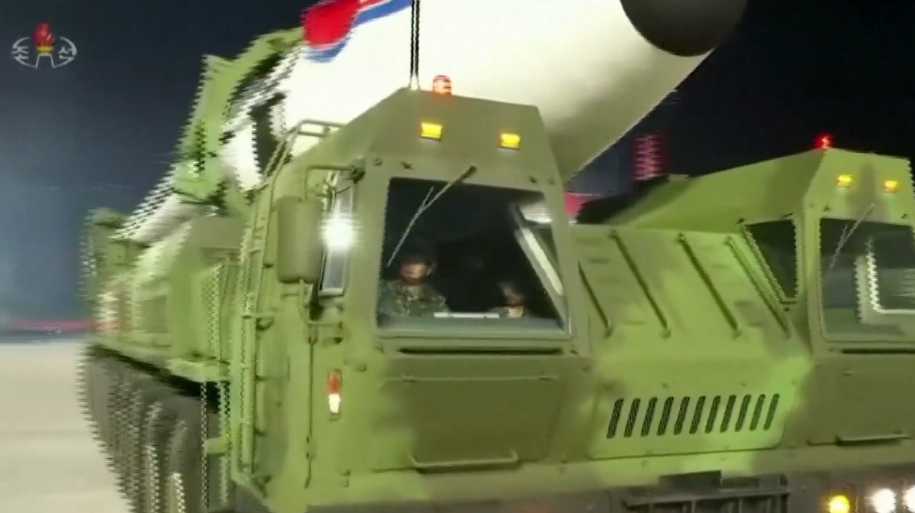North Korea launched a fresh round of ballistic missiles into the sea early Tuesday and warned it could take a “new road” in response to U.S.-South Korean military exercises that began this week.
The North fired two short-range ballistic missiles from South Hwanghae province in the western part of the country, South Korea’s Joint Chiefs of Staff said in a statement. The missiles traveled about 450 kilometers and reached a height of about 37 kilometers, it added.
North Korea has conducted four rounds of short-range ballistic missile launches in less than two weeks, raising doubts about working-level nuclear talks that U.S. officials had hoped would begin last month.
‘Flagrant violation’
Minutes before the latest test, North Korea’s foreign ministry released a statement slamming the U.S.-South Korean military drills as a “flagrant violation” of its recent agreements with Washington and Seoul.
“We have already warned several times that the joint military exercises would block progress in the DPRK-U.S. relations and the inter-Korean relations and bring us into reconsideration of our earlier major steps,” said a North Korean foreign ministry spokesperson quoted by the official Korean Central News Agency (KCNA).
The United States and South Korea on Monday moved ahead with the joint exercises, even while calling on North Korea to engage in working-level nuclear talks.
“The U.S. and South Korean authorities remain outwardly talkative about dialogue. But when they sit back, they sharpen a sword to do us harm,” the KCNA statement said, adding Pyongyang may “be compelled to seek a new road as we have already indicated.”
Washington and Seoul say the drills are defensive in nature, while Pyongyang sees them as preparation to invade.
[content id=”79272″]
A U.S. Forces Korea spokesperson said the U.S. military will continue training with South Korean forces, but declined to discuss military exercises “in order to preserve space for diplomacy to work.”
“We continue to train in a combined manner at echelon while harmonizing our training program with diplomatic efforts by adjusting four dials: size, scope, volume and timing,” the spokesperson said in an email to VOA.
The United States and South Korea have scaled back or canceled several rounds of military exercises since last year, as part of an agreement reached between U.S. President Donald Trump and North Korean leader Kim Jong Un in Singapore.
A senior U.S. defense official, speaking to reporters aboard a military aircraft en route to Tokyo, said Washington would like to see Pyongyang reciprocate. But some analysts say North Korea appears to have no plans to do so.
“So they’re going to continue their winter training exercises per normal, not downgrading them in any substantial way. And yet, they want us to completely end ours?” asks Bradley Bowman of the Foundation for Defense of Democracies.
“It’s bordering on ridiculous. And you start to have to wonder about at some point, whether he’s (Kim) really sincere and wanting a deal.”
All of S. Korea within reach
South Korea’s presidential Blue House convened an emergency meeting to discuss the latest North Korean launch, a spokesperson said.
Speaking in Tokyo Tuesday, U.S. Secretary of Defense Mark Esper said the United States takes the launchings seriously.
“We monitor them. We try to understand what they’re doing and why. We also need to be careful not to overreact and not to get ourselves in a situation where diplomacy is closed off,” he said.
U.S. and South Korean intelligence officials say the weapons North Korea launched Tuesday appear similar to the short-range ballistic missiles tested on July 25, according to South Korea’s Joint Chiefs of Staff.
North Korea on July 25 launched its version of a Russian-made Iskander short-range ballistic missile, which appears to be designed to evade U.S. and South Korean missile defenses. Since then, North Korea has also tested a new type of multiple rocket launcher.
Regardless of whether the latest launch involved missiles or a multiple rocket launcher, a distance of 450 kilometers from South Hwanghae province “means that all of South Korean territory is within firing range,” says Kim Dong-yub, a North Korea specialist at Seoul’s Institute for Far Eastern Studies.
Trump, who wants to continue talks with North Korea, has said he has “no problem” with North Korea’s recent missile launches, since they are short-range.
In a series of tweets last week, the president said the missile tests “are not a violation of our signed Singapore agreement, nor was there discussion of short-range missiles when we shook hands.”
“There may be a United Nations violation, but Chairman Kim (Jong Un) does not want to disappoint me with a violation of trust,” Trump said. “There is far too much for North Korea to gain.”
Working-level talks
Trump has met North Korean leader Kim three times since last June — in Singapore, Vietnam and at the demilitarized zone separating the two Koreas.
At the DMZ meeting in late June, both sides agreed to soon hold working-level talks. But North Korea has not agreed to set a date to begin those talks.
In the KCNA statement Tuesday, the North held out the possibility of more dialogue.
“We remain unchanged in our stand to resolve the issues through dialogue. But the dynamics of dialogue will be more invisible as long as the hostile military moves continue,” the KCNA statement said.
“A constructive dialogue cannot be expected at a time when a simulated war practice targeted at the dialogue partner is being conducted, and there is no need to have a fruitless and exhausting dialogue with those who do not have a sense of communication,” it continued.
U.S. Secretary of State Mike Pompeo had hoped to meet his North Korean counterparts at a regional summit last week in Bangkok, Thailand. But North Korea did not send any officials to the meeting.
“I wish they’d have come here,” Pompeo told reporters before heading home from Thailand. “I think it would have given us an opportunity to have another set of conversations, and I hope it won’t be too long before I have a chance to do that.”
Increasing actions
North Korea has slowly been increasing its threats and provocations — a strategy analysts say is designed to increase pressure on Washington and Seoul without completely derailing the talks.
“As long as Trump has good rapport with Kim Jong Un, I’m not too concerned,” said David Kim, a North Korea specialist at the Stimson Center. But Kim said he doesn’t expect much traction while the drills continue. “It may be awhile until we see lower-level talks resume,” he says.
North Korea has given the United States until the end of the year to change its approach to nuclear talks, warning it could resume longer range missile or nuclear tests. In a New Year’s speech, Kim warned North Korea could take a “new path” if the United States does not remove sanctions against his country.
With talks stalled yet again, some U.S. officials are hinting that a fourth Trump-Kim summit may be in the works. Asked about that possibility last week in Thailand, Pompeo said: “Stay tuned.”
SEOUL – Lee Juhyun in Seoul and Pentagon correspondent Carla Babb in Tokyo contributed to this report.
Source: VOA








